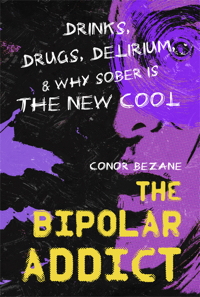 You’re staring at your computer screen for hours and hours and hours. You feel like you can’t type anymore. Or your mind feels numb from ringing up dozens of people at the cash register. You’ve had it with customers for the day. No matter what kind of work you do, it’s the same feeling: Your brain is fried and all you want is to take a nap.
You’re staring at your computer screen for hours and hours and hours. You feel like you can’t type anymore. Or your mind feels numb from ringing up dozens of people at the cash register. You’ve had it with customers for the day. No matter what kind of work you do, it’s the same feeling: Your brain is fried and all you want is to take a nap.
Most everyone has experienced burnout at work, and now the condition is recognized as an official syndrome by the World Health Organization (WHO), which describes it as the product of “chronic workplace stress that has not been successfully managed.”
At first, some news organizations were reporting that WHO had announced that burnout was a disease, but this is not the case. WHO designates this ailment as an “occupational phenomenon.”
According to WHO, burnout is signified by three criteria:
- feelings of energy depletion or exhaustion
- increased mental distance from one’s job, or feelings of negativism or cynicism related to one’s job
- reduced professional efficacy
The updated listing for burnout will be featured in WHO’s next International Classification of Diseases (ICD-11),a handbook outlining medical conditions. In the previous ICD, burnout was merely listed as a “state of vital exhaustion.”
The Organization for Economic Cooperation and Development, which represents the majority of the world’s most sophisticated economies, says 11 percent of U.S. employees work 50 hours or more per week, and that the average American devotes 40 percent of their day to their job. That puts the U.S. at the bottom of the work-life balance spectrum among first-world countries.
Burnout Is Deadly
Dangerous levels of stress on the job can lead to long-term health risks, and even death, according to a paper published by Stanford and Harvard University researchers. As many as 120,000 people die every year because of stressful jobs, costing American businesses up to $90 million in health care costs.
And, according to a 2018 study, researchers interviewed 1,000 hard-working American employees, and one in five was experiencing burnout.
Burnout vs. Depression
In order to diagnose burnout, doctors must rule out mood disorders such as depression and bipolar.
“Burnout is different from depression in that it is tied specifically to our work and our relationship with our work,” Elaine Cheung, professor of medical social sciences at Northwestern University’s Feinberg School of Medicine, tells NPR. “There needs to be a greater critical discussion on how we can more precisely measure and define this condition.”
Burnout is one slippery pickle. We need to work to live, but what do we do when our work is literally killing us? Most Americans work too hard and are paid too little. The dialogue that is happening around burnout syndrome will hopefully yield some positive outcomes that will favor the worker. Some European companies have mandated a month of vacation time and 35-hour workweeks. Wouldn’t that be nice?








Even with a shorter work week, American companies have some of the worst vacation and leave policies in the world.